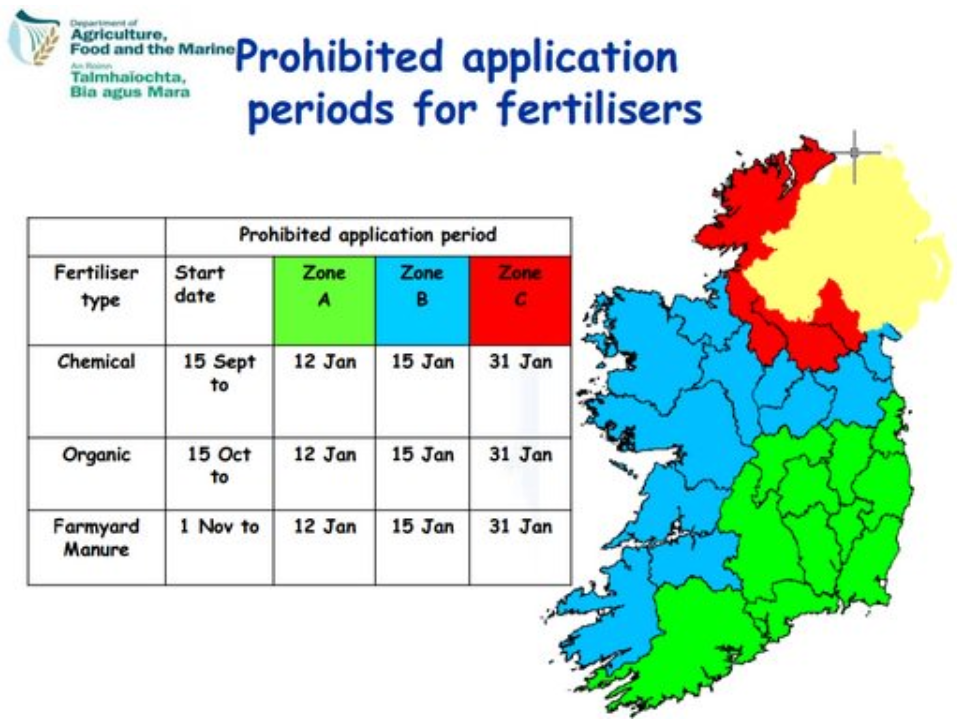Fertiliser and slurry spreading will once again be allowed over the coming days and weeks as the closed period comes to an end in some parts of the country from as early as next week.
The date from which you can begin to spread slurry, artificial fertiliser and farmyard manure from will depend on the part of the country you are located in, according to the Department of Agriculture, Food and the Marine.
Broken down into three separate zones – A, B and C – going from the south-east and east to the north and north-west, the three regions range from opening on Monday, January 13, to Saturday, February 1.
- Zone A – open date: January 13 – Counties: Carlow; Cork; Dublin; Kildare; Kilkenny; Laois; Offaly; Tipperary; Waterford; Wexford; and Wicklow;
- Zone B – open date: January 16 – Counties: Clare; Galway; Kerry; Limerick; Longford; Louth; Mayo; Meath; Roscommon; Sligo; and Westmeath;
- Zone C – open date: February 1 – Counties: Cavan; Donegal; Leitrim; and Monaghan.
Ahead of these dates, Teagasc has issued a number of tips for farmers chomping at the bit to get spreading.
Farmers are advised to make sure they have fertiliser in the yard and slurry agitated in time to be able to avail of a good spell of weather if the opportunity arises when the spreading period reopens.
It must be noted, however, that all should be mindful of the weather forecast. Farmers should make the most of a dry spell when it comes, but watch out for heavy rainfall and poor ground conditions.
Farmers can spread slurry on heavier covers – up to 1,200kg DM/ha – using applicators such as the trailing shoe in dry weather.
Finally, farmers are reminded to make sure to use a protected urea or urea product when spreading chemical fertiliser this spring; this will minimise the risk of N leaching on farms.
Safety first
Most importantly, farmers should take care when spreading slurry and stop taking risks.
- Agitate on a windy day, open all shed doors and work upwind at all times;
- Remove all livestock and control pets;
- Agitate/ventilate and stay away for 30 minutes;
- Keep tank openings secure and do not enter the tank at any stage;
- Avoid working alone.
Further safety guidelines will be brought to you on AgriLand over the coming days, so watch this space.

